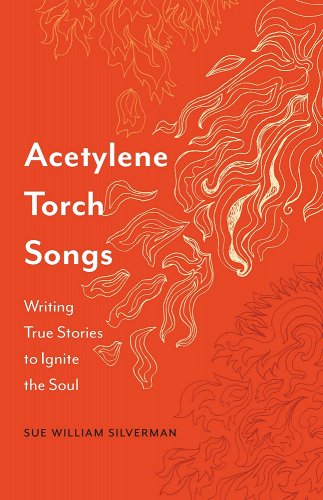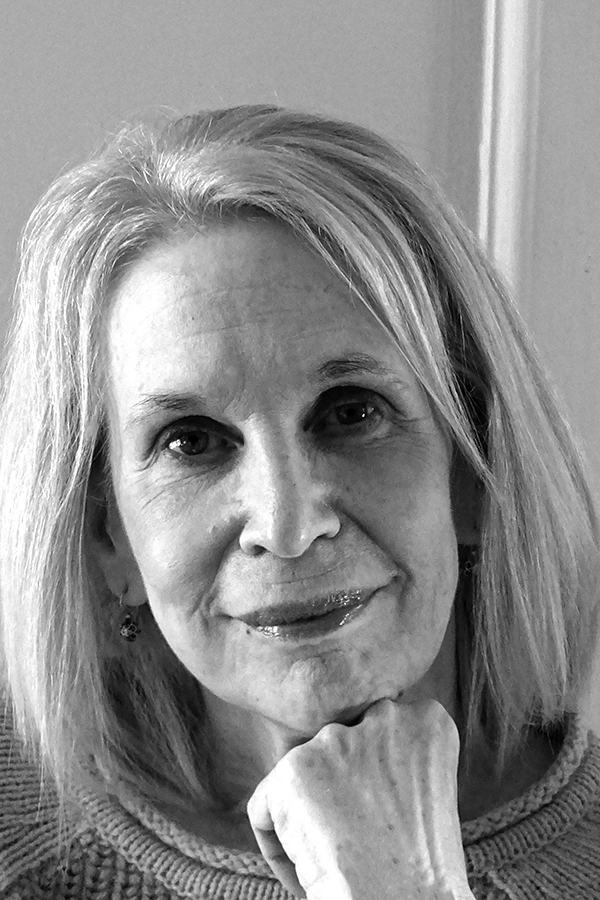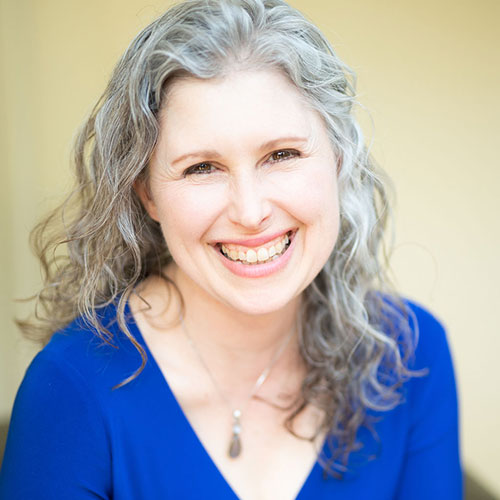By Lisa Cooper Ellison
[This double-feature is a collaboration between our interviews and reviews team.]
My first introduction to Sue William Silverman came through a craft essay on the Brevity Blog on the two voices in creative nonfiction. I was so impressed with the article, I bought her first craft book, Fearless Confessions: A Writer’s Guide to Memoir, and began using it with my students. Soon after, it seemed like I saw Sue everywhere—in essays at journals I admired, online groups I belonged to where I witnessed (and benefited from) her generous support, and book recommendations colleagues gave to me. So, when I was invited to review her latest craft book, Acetylene Torch Songs: Writing True Stories to Ignite the Soul, I jumped at the chance.
The Review
 As a writing coach, I read a lot of craft books and widely recommend my favorites. But before adding a new one to my overloaded shelves, I always ask the following questions: Is it necessary, given all the great advice that’s already been published? Can I recommend it to both novice and seasoned writers? Most importantly, will I learn something new from this book?
As a writing coach, I read a lot of craft books and widely recommend my favorites. But before adding a new one to my overloaded shelves, I always ask the following questions: Is it necessary, given all the great advice that’s already been published? Can I recommend it to both novice and seasoned writers? Most importantly, will I learn something new from this book?
Acetylene Torch Songs is equal parts manifesto on the power of confessional writing, memoir of Sue’s writing career, and craft book that covers the gamut from why we write and how to sustain our motivation to lessons on voice, perspective, and structure, just to name a few. It’s designed to be a comprehensive primer that first stokes the fires of creativity, then teaches key lessons on the craft of writing, and wraps up with several appendices that will help you take your manuscripts to market.
But unlike many craft books that focus on a specific topic, like Donald Maass’s The Emotional Craft of Fiction, or processes writers can use to complete their manuscripts, like Allison K Williams’ Seven Drafts, Sue builds her book around an ethereal premise. She argues that the writing the world needs comes from our souls, which requires groundedness and a deep exploration of the self. She examines every element in the book through this lens, so that when she’s talking about how to find each project’s voice, she’s not just talking about issues like tone, syntax, and word choice (which she does), but how to embody the voice of the soul and find the words inside you.
Chapters largely follow the format you’d expect, including topical lessons, examples that illustrate her points, and exercises designed to help you apply her concepts to your work. Yet it breaks form in several ways. While it can be beneficial to read most craft books from beginning to end, with many you can start anywhere without getting lost. It’s possible to do that with Acetylene Torch Songs, but because her chapters, and especially the essays embedded in them, are in conversation with one another, it’s best to read it from beginning to end—at least on your first pass.
The biggest departure, however, involves the excerpts Sue chose to illustrate her points. Many of the best craft books in my collection include passages from exemplar texts written by other writers. But apart from a few poignant and well-placed quotes, Sue draws exclusively from her own publications, as well as a few pieces written specifically for this book—including an essay in process, which she invites readers to pick apart. The essays serve as meta for the “show and tell” work writers must do, by illustrating the points she’s making, then using a process of deconstruction to tell us about them.
Sue’s vast catalogue of short and long-form projects meant she could pull this off without sacrificing the diversity needed to both make her points and keep it interesting. Plus, by focusing on her own writing, she can talk about the decisions she made, rather than speculating on or analyzing someone else’s writing. Reading her deconstructed essays was like picking her brain while also learning how the material fits together.
A few items from Fearless Confessions get a facelift in this book, like the voices of innocence and experience, which she now calls the aware and unaware voices. I was delighted to see this update, because while I loved the original concept, this reframe is much clearer. She also shares an innovative visual tool writers can use to structure an essay or essay collection, which is not to be missed.
The breadth of what she covers makes this book a great resource for anyone who wants to understand the start-to-finish writing process and delve into specific skills. The deconstructions make this accessible for newbies and useful for seasoned writers wishing to go deeper.
That proves it’s a strong craft book, but it doesn’t answer my first question about whether it’s necessary. What takes this over the finish line is the coupling of her foundational premise with a practical approach that never loses sight of its aim—making writing a sacred act, in the spirit of authors like Julia Cameron and Mirabai Starr.
There was just one question left to answer: would I learn anything new? While I expected to have a few epiphanies based on a repackaging of the best craft advice, I was pleasantly surprised by what I discovered—like the word Lacunae to describe the gaps in our memory, something I frequently teach about. But what impressed me most was the way she framed the use of masks in the creative process. It not only introduced me to a new way of viewing them, but it gave me some fresh language and a framework my students and clients can use for approaching their stories.
Books with spiritual aims are supposed to reach you when you need them most. The invitation to review this book arrived a few weeks after my father’s heart surgery. Immersed in his care and uncertain about his future, my logical mind said, “Give this opportunity to someone else.” But my heart kept saying yes, and I could tell that this yes wasn’t about pleasing Sue or adding another publication to my portfolio. No—something said you need this book. And I did. Acetylene Torch Songs reminded me of why I write and motivated me to rebirth some of the more confessional pieces I’d shelved. It made me not just want to be a better writer, but to do the kind of soul work that creates “writing that burns through, no matter what it finds.”
The Interview

Lisa Cooper Ellison: How has your understanding of the craft of writing evolved since the publication of Fearless Confessions: A Writer’s Guide to Memoir? Was there something missing in this first text that motivated you to write this book?
Sue William Silverman: I wrote this second book, Acetylene Torch Songs: Writing True Stories to Ignite the Soul, to reflect my new awareness around creative nonfiction. The first book focuses mainly on memoir; that’s all I’d written at that time. Since then, I’ve written two essay collections and am working on a third. “Acetylene” speaks not only to traditional memoirists, but those who write, say, personal, lyric, meditative, hybrid, flash, and speculative nonfiction.
My understanding of the genre also deepened after teaching more than a decade since writing my first craft book. For example, while I may have intuitively understood the idea of “double vision” when I wrote Fearless Confessions, I did not know how to fully articulate it. In Acetylene Torch Songs, I show the importance of an author’s ability to join past experience with present awareness. We don’t just remember an event. Rather, because of our present awareness, we reflect upon our memories. I show how reflection and metaphor ripple throughout all elements of an essay or memoir: voice, structure, sensory imagery, retrieving memory, and so on.
Creative nonfiction is both microscopic and telescopic. We examine the small details of our life while, through metaphor, we offer a larger, more universal meaning. For example, even if you haven’t struggled, say, with sex addiction (as I have), if you read my memoir about it, you will, I hope, relate to the underlying feelings of alienation, loss, and spiritual emptiness. Because we all share similar emotions, we are, as creative nonfiction writers, illuminating the human condition.
LCE: Many of the craft books I read include excerpts from other published writers, but Acetylene Torch Songs focuses largely on your own writing. Why did you make this choice and what were you able to accomplish that wouldn’t have been possible if you’d chosen to highlight other writers’ work?
SWS: In many ways this is a memoir of a writer at work, a backstage pass allowing readers an inside look into how I write as well as how I teach.
For example, the book includes sections on memory and how to fill the lacunae or gaps in it. Trusting one’s memory is an area with which most writers of creative nonfiction struggle. “What if I don’t remember enough details around a given event? How can I even write it?” I offer insights on ways that I learned how to fill these gaps through the use of sensory details, speculation, experimental structures, and so on, with the hope these suggestions resonate with readers.
Additionally, I didn’t want the book to sound academic, which it would have if I’d deconstructed other authors. I teach, but I’m not a traditional academic. I mentor and model rather than lecture. I wanted to highlight this more hands-on approach. I show, almost step-by-step, how a writer enters the complex world of self-exploration. In short, I wanted this book to be written in my own voice, to be non-academic, and writer-friendly.
LCE: You use essays you’ve written to illustrate points, some of which are deconstructed for the reader. Did you write the essays in Acetylene in response to the points you were trying to make, or did the points arise from the essays?
SWS: For the most part, the chapters in Acetylene came first. I subsequently realized I needed to write my own essays, highlighting the theme of each chapter, to ensure that my ideas about craft worked! How could I ask a reader to trust me if I couldn’t follow my own advice?
Of course, after I wrote any given essay, I tweaked chapters here and there to clarify the interaction between essay and instruction. My ideas about, say, voice or memory, informed an essay; then, after I wrote the essay, it affected my ideas in the chapter. I toggled back and forth in this way until all seemed as harmonious as possible.
LCE: You not only include an unfinished, and by your own admission, flawed draft of an essay in one of your chapters, you ask the reader to identify its weaknesses. How were you able to trust the reader with something so vulnerable?
SWS: To be a writer, you need to be emotionally vulnerable. I used my own essays to show my missteps and mistakes (which I obviously couldn’t do using examples from other authors). All writers have messy early drafts, but I can only show you mine! By doing so, I hope readers of this book won’t be as hard on themselves when their early drafts are likewise messy.
After all, writing is messy…until, finally, it isn’t. Ultimately, it clarifies and shines—after slogging through draft after draft after draft. Writing requires patience, tenacity, and fortitude. But just think how sad it’d be if you never wrote your narratives!
LCE: You write in the book “the most important thing to do is ‘hear’ how a piece of writing presents itself.” How do you “hear” your writing, and what did you need to listen for when writing Acetylene Torch Songs?
SWS: To “hear” any given essay or memoir is to discover the voice for the piece at hand. Is what you’re writing funny? Tragic? Ironic?
As I move from essay to essay or from book to book, I tend to switch the voice to fit the current need. For example, the narrator in my first book, Because I Remember Terror, Father, I Remember You, sounds like the wounded girl she is—mis-loved by her father—whereas the narrator in Love Sick sounds edgier, tougher, as she struggles with sex addiction. Both these narrators sound different from the one in The Pat Boone Fan Club: My Life as a White Anglo-Saxon Jew who, feeling emotionally lost, has embarked on a misguided spiritual quest. This voice, in turn, sounds different from the ironic tone in How to Survive Death and Other Inconveniences as the narrator attempts the impossible: to survive death!
Don’t panic if the sound of your essay isn’t immediately apparent. When writing a first draft, remember: This is only a draft. You might try reading it aloud so you can physically hear it. What parts sound authentic? What resonates? As you move from draft to draft, follow that whisper until it becomes full-throated.
For Acetylene Torch Songs, I didn’t want to re-write my previous craft book. Once I came up with the concept of not just embodying an experience in creative nonfiction, but ensouling it as well, I knew I’d found a voice that was encouraging and intimate, which is the voice I wanted. In short, you might not hear the voice of a piece right away. Most often, you discover it in the process of writing.
“The soul is the origin of creativity. It’s the birthplace of the magic, the mystery of writing. As we write, we turn our souls into art.”—Sue William Silverman
LCE: In the book, you write “Creative nonfiction is an intense questioning of the soul.” That’s a bold statement, yet it also feels true. Can you elaborate on why we must intensely question the soul, as opposed to simply rendering the facts with accuracy, which is what happens in journalism?
SWS: There’s a difference between truth and fact. Sure, we can’t just make stuff up, so CNF is rooted in actual experience. But truth—and the questioning of the soul in order to achieve it—is ultimately much more interesting than mere facts. For example, there’s an essay in the book called “Graduate Studies in Hebrew” in which the narrator is determined to seduce a man old enough to be her father. If I just described the facts of the seduction, the reader might think: “OK, the narrator seduced a man. So what?” However, if, in the essay, I discover the metaphors of the experience, show the motivation of the narrator—the story behind the story—that’s creative nonfiction. It’s not journalism or a fact-filled academic treatise. Implementing metaphor and reflection is writing from the soul.
The soul is the origin of creativity. It’s the birthplace of the magic, the mystery of writing. As we write, we turn our souls into art. Art expands the psyche. To write from the soul means to not write “safe.” Take emotional and aesthetic risks. To be vulnerable is to reveal your soul. If you write from an ache, it will touch someone else’s ache. It’s a soul touching a soul.
This means we write from our souls to craft our obsessions and our memories onto the page. We write until all elements of an essay coalesce to form a deeply intentional, holistic, and emotionally authentic work of art.
And that, I think, is at the core of Acetylene. An essay or book must be holistic to be a work of art. It’s not made up of disparate parts: voice, structure, sensory details. No! Rather, it’s about how all components of craft holistically work together. Achieve that, and you’ve turned your soulful life into a work of art.
 Lisa Cooper Ellison is an author, speaker, and trauma-informed writing coach with an Ed.S in clinical mental health counseling. She has spent the last two decades helping clients and students turn difficult experiences into art, and currently teaches courses in memoir, the psychology of writing, and the book proposal.
Lisa Cooper Ellison is an author, speaker, and trauma-informed writing coach with an Ed.S in clinical mental health counseling. She has spent the last two decades helping clients and students turn difficult experiences into art, and currently teaches courses in memoir, the psychology of writing, and the book proposal.
You can check out her Writing Your Resilience podcast on Spotify, Apple Podcasts, YouTube, or wherever else you get your podcasts. Her essays have appeared in Huffington Post, Hippocampus Magazine, and Kenyon Review Online, among others.



A gorgeous introduction to both beautiful work and a thoughtful interview. Thank you!